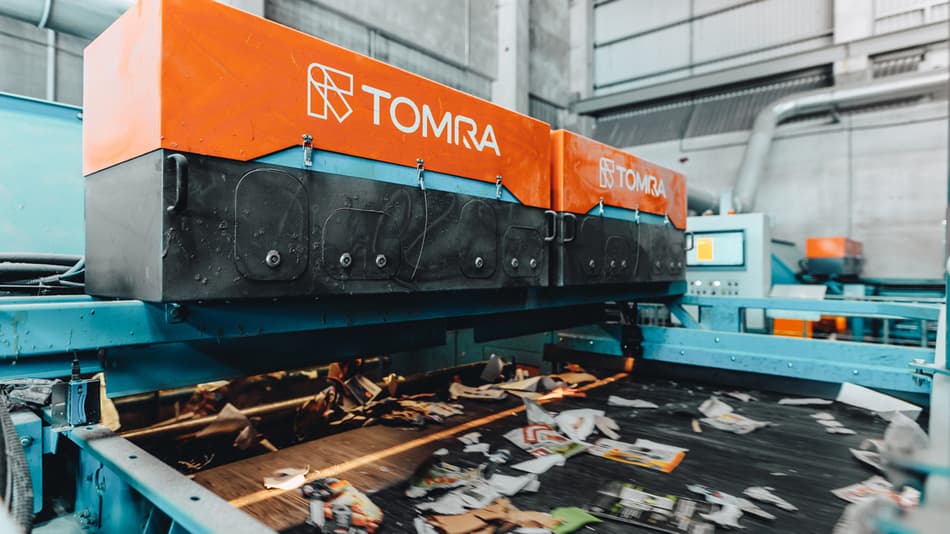
HolyGrail intelligent sorting to achieve a circular economy for packaging
HolyGrail, supported by technology that TOMRA provides, aims to speed up the transition to a circular economy for plastics by using chemical tracers and digital watermarks to sort post-consumer packaging.
Improved sorting can improve both the quality and quantity of recyclate, which would mean more plastics go back to the market and bring value instead of becoming waste.
Chemical tracers and digital watermarks introduce a machine-readable code or identifier into an item. Then, rather than relying only on the ability to distinguish one or several properties of collected items (e.g., shape, density, IR spectrum of the resin, visual identification, etc.), the code provides the sorting system with information unique to that item by pointing to a database where that information is stored.
The information tells the system in which way to sort the item (e.g., food grade vs. non-food grade). Such information can be updated and expanded over time.
What is a chemical tracer?
A chemical tracer is a molecule embedded in the plastic resin or packaging component such as a label, acting as a binary ‘code’ as the chemical is either present or not. The molecule is detectable due to its spectroscopic properties (e.g., being fluorescent under UV light).
What is a digital watermark?
A digital watermark is an optical code the size of a postage stamp, applied directly within an item’s label artwork or embossed in the mold, usually in a repeatedly-tiled manner. The code is created by modulating the pixels that make up the design, or by adding micro-topological variations to the surface of the plastic as a texture - there is no need for added materials.
Benefits of chemical tracers and digital watermarks
- The technologies enable sorting of much higher granularity and quality.
- Retrofitting existing sorting equipment with add-on modules for detection of chemical tracers or digital watermarks is likely less CAPEX intensive than upgrading recycling facilities with more sophisticated detection technology based on material properties.
- The machine-readable codes could also be utilized to enable other applications throughout the value chain. For example, digital watermarks could be used in manufacturing for faster checkout in retail applications, and to provide information transparency and communicate with users. In principle, it could be possible to access data in real time, and to get accurate recycling figures broken down to format or individual product level. This could be used to inform better design choices to eliminate packaging elements that can’t be recycled.
Since its initiation in early 2017, project HolyGrail has received a lot of traction from both industry, and local and EU governments next to associations (like Petcore Europe, PCEP, Plastic Recyclers Europe, to name a few).
